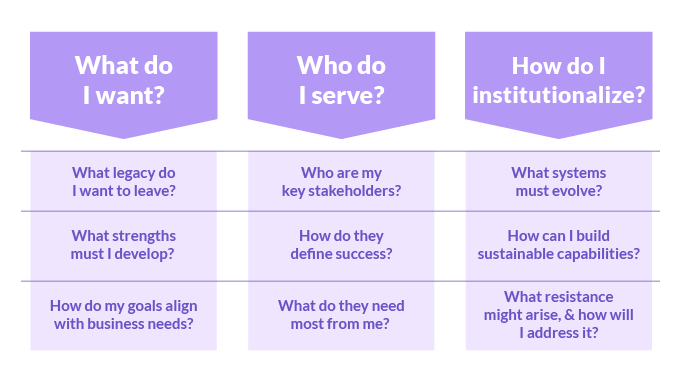HR Transformation: How Innovation is Driving the Future of Work

A Global Employee Recognition and Wellness Platform
I recently listened to a podcast featuring Dave Ulrich, one of the leading voices in organizational effectiveness and HR strategy. What he shared shifted entirely my perspective on why most HR transformations fail and more importantly, what the successful ones are doing differently.
Here's what stood out: Ulrich said the pandemic sparked what he calls "the people crisis." Unlike 2008, when companies had to fix their finances, this time they had to rethink how they manage people fundamentally.
It reminded me of two companies I know. Same industry, same pandemic challenges. Company A's HR team stuck to the basics i.e.payroll, compliance, and administrative tasks. Company B, however, transformed HR into a business growth engine.
The results? Clear and compelling. Engaged employees drive performance—companies with high engagement see 23% more profit and 147% higher earnings than their competitors.
Company B didn't get lucky. They figured out what Ulrich calls "human capability transformation." And that's precisely what we're diving into today.
Recommended:Listen to this Podcast on Employee recognition by Dave Ulrich, where he talks about How HR Innovation Is Driving The Future Of Work?
The Crisis That Rewrote the Rules
The pandemic exposed a hard truth about organizational resilience. While the 2008 financial crisis forced companies to rethink cash management, the COVID crisis demanded a radical shift in how we manage people, our most valuable asset.
This ushered in what researchers now call the people capability crisis, a moment that permanently separated strategic HR from administrative HR.
The AIRe U.S. Report 2023–24, developed by Great Place To Work® and Vantage Circle, reinforces this shift. It highlights how top-performing organizations are redefining HR not just as a function, but as a strategic lever for business transformation, driving stakeholder value, culture resilience, and leadership depth across the enterprise.
Beyond Human Resources: The Human Capability

Redefining HR's Core Purpose
For decades, HR has been defined by its focus on people—recruiting, training, compensating, and managing employees. But this narrow view misses a broader, more strategic opportunity.
Ulrich's "human capability" framework expands HR's scope into three interconnected dimensions:
-
People (Human Capital)
The traditional strength of HR is talent acquisition, development, and performance management. This covers the individual capabilities that drive success. -
Organization (Capabilities)
The systems, culture, processes, and design that enable people to collaborate effectively. Think culture transformation, organizational structure, and capability building. -
Leadership (Distributed Power)
Not just about the C-suite. It's about leadership embedded across every level thus developing people who can navigate complexity and lead change.
The Visual Framework
Ulrich offers a powerful metaphor: Hold up your hand—each finger represents individual capabilities. Make a fist, and you see the organization functioning as one—now gesture with your hand—that's leadership in action.
When all three elements work in harmony, magic happens. Strong talent with weak systems can't execute. Great systems with poor leadership lack direction. The best organizations align and optimize all three.
The Evolution of HR: From Operations to Value Creation

The HR function has evolved through four key phases:
-
Operational Phase – Managing employment terms and compliance
-
Best Practice Phase – Implementing talent and compensation strategies
-
Strategic Phase – Aligning HR with business objectives
-
Value Creation Phase – Driving measurable impact for multiple stakeholders
Ulrich identifies today's environment as the 2020-21 people and organizational crisis, paralleling 2008's financial upheaval but centered on human challenges. It's a pivotal opportunity for HR to demonstrate actual strategic value.
This journey aligns with the AIRe Framework for HR Transformation, introduced in the AIRe U.S. Report 2023–24. It outlines four key drivers for evolving HR in a post-pandemic world:
Appreciation– Consistent, meaningful recognition of employee contributions.
Incentivization – Tangible and intangible rewards that reinforce desired behaviors and outcomes.
Reinforcement – Systems, processes, and rituals that embed recognition and culture into the fabric of the organization.
Emotional Connect – Creating a sense of belonging and purpose, ensuring employees feel seen, valued, and connected.
The AIRe framework emphasizes that fundamental HR transformation must go beyond improving internal processes, it must embed value creation across every interaction, every decision, and every system.
Why Traditional Models Are Failing
Nearly 70% of HR transformations don't meet expectations. Why? Because they focus on internal processes rather than external value. Common missteps include:
-
Prioritizing efficiency over stakeholder impact
-
Measuring activity (like completion rates) over business outcomes
-
Treating technology as the solution, rather than a tool
-
Relying on best practices instead of innovating new practices
-
Organizing around HR functions instead of value creation
Navigating the Technology Paradox
The pandemic fast-tracked HR tech adoption by 5–7 years. AI recruitment, people analytics, and digital platforms are now widespread.
But here's what truly moves the needle: MIT research shows face-to-face interaction fosters far more trust, creativity, and collaboration than digital-only communication.
Companies that preserved strong human connections during remote work saw 20% higher innovation rates, better problem-solving, and tighter team cohesion.
The takeaway? It's not about choosing between tech and human, it's about integrating them strategically. Use AI for analysis, not relationships. Automate routine tasks, but reserve critical moments for human touchpoints.
That's the hybrid advantage and it's what sets future-ready HR teams apart.
The Leadership Challenge Nobody Discusses
Most leadership development efforts fall short. They focus on building specific skills—strategic thinking, communication, and decision-making. These matters are essential, but they're not enough.
Exceptional leaders master something deeper: paradox navigation , balancing opposing forces productively instead of choosing sides.
Consider the tensions you manage daily:
-
Drive short-term results and invest for the future
-
Provide direction and empower innovation
-
Standardize processes and allow local flexibility
Companies with strong engagement strategies don't pick one over the other. They focus on immediate needs to maintain strategic vision then connect both for breakthrough performance.
Ulrich puts it well:
"Great leaders seem to know how to navigate between those two guardrails. They zoom out and they zoom in, helping people move forward by making tensions into opportunities to learn and grow."
Diversity and Learning: Foundational Assumptions for Success
Ulrich reframes diversity as more than compliance , it's about using power to empower others. That shift turns the focus from quotas to creating spaces where everyone can contribute fully.
The second key? Believing everyone has something to offer. Leaders who embrace this foster learning cultures where diverse perspectives drive innovation.
The Outside-In Revolution
Many cultural initiatives fall flat because they look inward.
Traditional culture design starts with internal values like integrity or teamwork, then measures success via employee surveys.
The outside-in approach changes that! Instead of asking, "What are our values?" ask, "What value do stakeholders get from our culture?"
This mindset shift turns culture into a competitive asset, driving impact for customers, investors, and communities, not just employees.
Organizations using outside-in culture strategies report stronger financial performance and higher stakeholder satisfaction.
Three Essential Questions for HR Professionals
HR professionals should ask themselves three foundational questions:

Building the Future-Ready HR Organization

The Skills Revolution
HR is undergoing its most profound transformation yet the future demands entirely new capabilities.
Traditional HR Skills:
-
Policy and compliance management
-
Recruitment and selection
-
Training delivery
-
Compensation administration
-
Employee relations
Future-Ready HR Capabilities:
-
Data analytics and predictive modeling
-
Organizational design and change leadership
-
Digital transformation strategy
-
Business partnership
-
Stakeholder value measurement
The Integration Imperative
The best HR transformations don't discard the old as they integrate it with the new.
This requires ambidextrous capability—the ability to balance operational excellence with strategic innovation.
Operational Excellence (Efficiency):
-
Automate routine processes
-
Ensure legal compliance
-
Deliver consistent service
-
Optimize HR costs
Strategic Innovation (Effectiveness):
-
Reinvent talent strategies
-
Solve complex business problems
-
Experiment with new tech and methods
-
Build an HR-driven competitive advantage
Looking Forward: The Optimistic Future of HR
Thus, despite the challenges, the future belongs to HR leaders who focus on creating value, not just managing processes.
The future of work isn't just about remote policies or AI platforms—it's about reimagining how human capability fuels business success.
HR professionals who navigate paradoxes, integrate technology wisely, and keep the human element front and center will shape tomorrow's winning organizations.
The real question isn't whether HR will stay relevant.
It's whether today's HR leaders will rise to the moment—and become the value creators their organizations urgently need.



















